US Trucking Assembles for Vaccine Transportation
Supply Chain Reactions
A Condensed Update For American Shippers
Issue Date: December 2, 2020
Quote of the Issue:
“Think like a queen. A queen is not afraid to fail. Failure is another steppingstone to greatness.”
– Oprah Winfrey
US Trucking Landscape: Ready to Mobilize for Vaccine Transportation
ShapLight Focus: The domestic trucking industry employs nearly 3.5M Americans
- In coordination with Operation Warp Speed, the US Department of Transportation (DOT) has announced that it has taken all necessary regulatory measures for COVID vaccine transportation
- DAT reports that there are 4.5 FCL loads available per truck, equaling the 2020 high for this measure of trucking demand
- Despite the demand uptick and a modest 2.5% increase in fuel, nationwide trucking rates have been remarkably stable at $2.45 per mile; the industry anticipates upward pressure on rates in the coming weeks
- In November, inbound and outbound cargo volumes at Chicago rail complexes reached 52-week highs
- Los Angeles/Long Beach (LA/LB) terminals have been continuously crippled by port congestion, which has negatively affected port dwell times, trucker waiting time, chassis availability, local warehouse space, and the ability to return empty equipment reliably; the industry is witnessing two to three week wait times to get cargo on the rail from Southern California
US Congress: Slow to Renew Crucial Trade Programs
ShapLight Focus: The Generalized System of Preferences (GSP) program saves US importers and consumers over $1B in reduced duties annually
- Established by the Trade Act of 1974, the GSP is the largest and oldest US trade preference program; it is considered highly unlikely that Congress will renew GSP in 2020, however, a 2021 renewal is highly probable with importers almost certainly eligible for retroactively refunded duties
- In keeping with the American Manufacturing Competitive Act of 2016 (AMCA), the Miscellaneous Tariff Bill (MTB) – scheduled to expire on December 31st – is a law that temporarily reduces or suspends import duties on many products; though the US International Trade Commission (USITC) has vetted importer petitions, it appears that Congress is also unlikely to act on the MTB renewal before 2021, which will result in higher tariffs for importers of eligible products
- The Environmental Protection Agency (EPA) has greatly increased their scrutiny and examination rates of US imports across the country due to an increase in fraudulent product claims, as well as a rise in the importation of chemical products connected with COVID-19
- The Federal Maritime Commission (FMC) issued a supplemental order expanding the scope of Fact Finding No 29 (FF 29) into carriers’ detention and demurrage practices; the commission is closely evaluating a surge of complaints filed by shippers related to charges and penalties imposed during unprecedented congestion at US ports
Airline Industry Loses More Money in 2020 than any Year in History
- Air cargo generated 36% of total airline revenues in 2020, after yielding a mere 12% in 2019
- Total global airfreight volume is trending to be down 11.6% in 2020 vs. 2019; however total cargo revenues are up 15% year-over-year due to a 24% overall capacity diminishment and a steep 45% reduction in passenger belly space
- The airline industry continues to prepare for a truly global vaccine distribution; all major carriers have established task forces and project teams to evaluate the potential supply chain realities and to best prepare for efficient cold chain deliveries
- The International Air Transport Association (IATA) has predicted that the 2021 airfreight market will return to 2019’s volumes – over 61M tons – while setting a revenue record of $140B; the prediction is based on a continued cargo capacity crunch and an expected increase in time and temperature-sensitive shipping
- Cargo operations at Los Angeles Airport (LAX) are so congested that Air China has canceled all LAX bound flights until December 10th
Please note the following three-month airfreight rate trend chart:
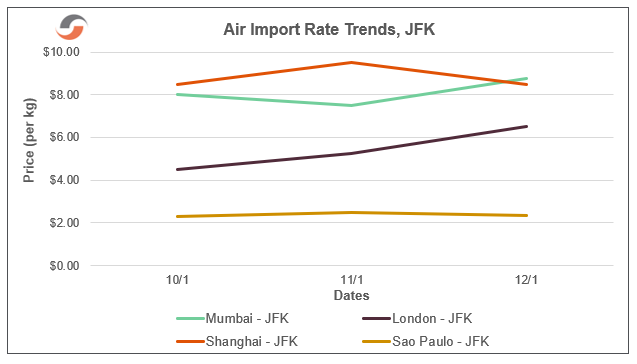
Ocean Freight Import Rate Trend Charts
Ocean Import FAK Rates to US West Coast (per 40’):
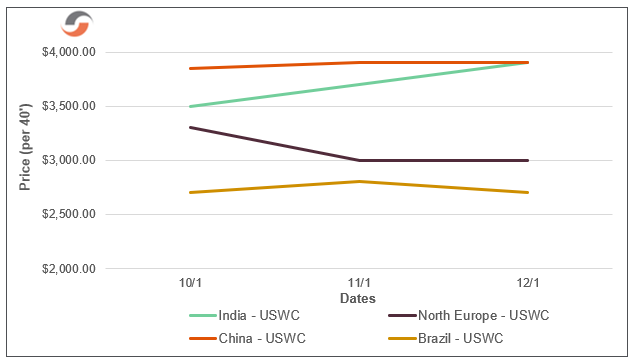
Ocean Import Rates to US East Coast (per 40’):
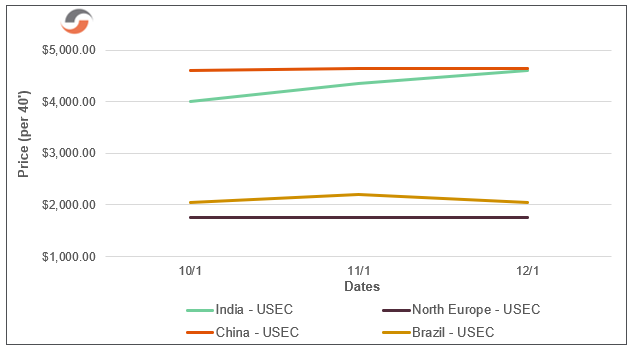
Transpacific Forward Rate Projections (per 40′):
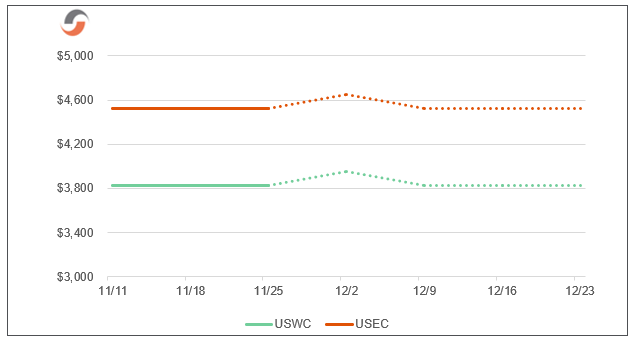
Our Expert Shapinion
Hurry Up, Pay More, Wait, Wait Again,
Pay More, Wait Again, Pay More, Repeat
-A Recipe for Very Angry Importers from Asia
There are moments in our industry where truth is actually stranger than fiction. And yes, sometimes you really do have to laugh to keep from crying. We are currently experiencing a true recipe for tears of rage for importers from Asia.
Basic Ingredients:
A steamship industry witnessing bountiful demand while fearing scrutiny from China’s Ministry of Transportation and the United States Federal Maritime Commission (FMC).
How Ocean Carriers are Cooking Importers in 2020:
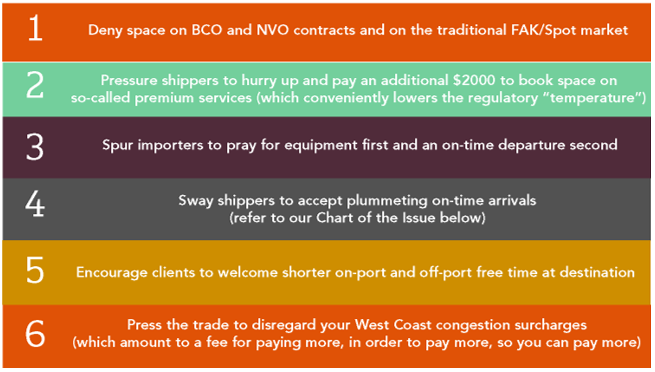
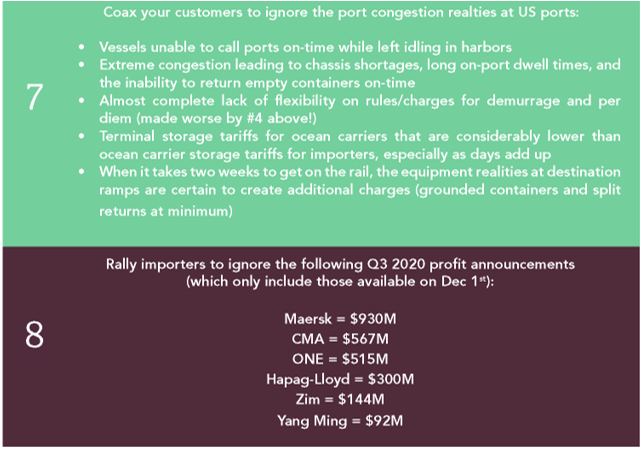
How Ocean Carriers are Cooking Importers in 2020:
Ensure that your importer is paying $2000 or more extra per container to enjoy the least reliable transit times in a generation, only to offload at miserably congested terminals – some carrier owned – to face demurrage and per diem charges almost entirely outside the shippers’ control.
Also, be certain these storage charges are exacerbated by reduced free time from those same carriers, who happen to mark-up terminal charges incrementally for each day free time expires.
Finally, make certain that the record-breaking financial results for the ocean carriers are in the importers’ faces just as their storage invoices pile-up, well before receiving the critical merchandise they need for their own livelihood and survival.
Chart of the Issue:
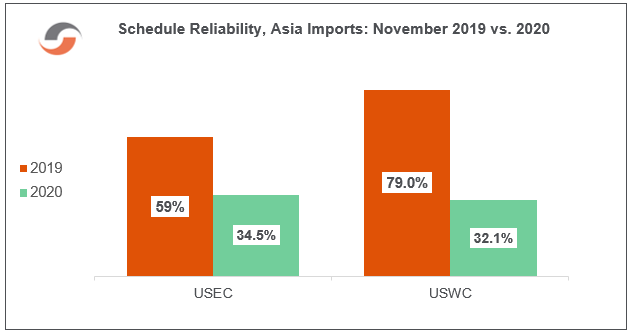
Shap Fact of the Issue:
In 2019, 170 million Chinese tourists spent an estimated $220B abroad. With COVID travel restrictions and quarantine protocols in China, this $220B is a big part of China’s domestic growth plans for 2020 and 2021.
The leadership and staff of Shapiro understand the personal and business anxiety each of you is experiencing. We want nothing but safety today and a return to normalcy tomorrow for you and your families. Please reach out to us if you have any questions—or if we can assist you in any way.
